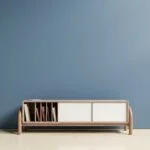Decorating a new home is an exciting and fulfilling endeavor that allows homeowners to transform their living space into a reflection of their personal style and preferences. In this blog post, we will explore the essential steps and considerations for creating a harmonious and inviting environment that caters to the needs of the homeowner. From assessing the space to adding final touches, we will provide valuable insights and tips on how to decor new home with confidence and creativity.
Before diving into the intricate details of interior design, it is crucial to assess the new space thoroughly. By evaluating the size, layout, and potential areas for improvement, homeowners can gain a better understanding of how to optimize their living environment. Setting a realistic budget is also essential to ensure that decorating efforts align with financial capabilities while prioritizing essential items and necessary renovations.
As we delve deeper into the world of interior design, we will help readers define their individual style by exploring various design aesthetics and providing guidance on creating mood boards, gathering inspiration, and seeking professional assistance if needed. Additionally, our blog post will cover furniture selection, color scheme choices, texture incorporation, personal touches, final touches, maintenance tips – offering a comprehensive guide to transforming a new house into a personalized and aesthetically pleasing home.
Assessing Your Space
When moving into a new home, one of the first steps in the decorating process is assessing the space. This involves taking a closer look at the size and layout of each room to determine how best to utilize the available space. By carefully evaluating these aspects, homeowners can create a more functional and aesthetically pleasing environment that suits their needs and lifestyle.
One important aspect of assessing your new home is identifying the focal points in each room. These are areas or features that immediately draw attention, such as a fireplace, a large window with a view, or architectural details like exposed beams. Understanding these focal points will help in determining furniture placement and creating a balanced visual aesthetic within the space.
Another key consideration when assessing your new home is evaluating traffic flow within each room. This involves determining how people will move through the space and ensuring that there are clear pathways and enough room for movement. By optimizing traffic flow, homeowners can prevent potential congestion and create an inviting and functional environment for daily activities.
Finally, assessing your new home also involves identifying potential areas for improvement. This could include identifying spaces that feel cramped or awkward, as well as recognizing opportunities to enhance natural lighting or improve the overall functionality of certain rooms. Being aware of these potential areas for improvement sets the stage for effective planning and thoughtful design decisions as homeowners embark on their decorating journey.
By thoroughly assessing their space, homeowners can gain valuable insights that will guide them in creating a personalized and well-designed living environment in their new home. Whether it’s identifying focal points, evaluating traffic flow, or recognizing potential areas for improvement, this initial step lays the foundation for successful decorating endeavors.
Setting a Budget
When it comes to decorating a new home, setting a budget is an essential first step. Without a clear understanding of how much you’re willing to spend, it’s easy to overspend and end up with financial strain. Here are some tips for establishing a realistic budget for decorating your new home:
1. Assess Your Finances: Before diving into decorating, take stock of your overall financial situation. Consider your income, existing expenses, and any savings or available funds that can be allocated towards the decoration process.
2. Prioritize Essential Items: Make a list of essential items that need to be prioritized during the decoration process. This may include furniture for main living areas like the living room and dining room, as well as basic decor elements like lighting fixtures and window treatments.
3. Allocate Funds Wisely: Once you’ve identified essential items, allocate funds accordingly. This may involve setting aside a specific portion of your budget for furniture purchases, another portion for decor items, and additional funds for any necessary renovations or improvements to the new home.
By taking these steps to set a clear budget and allocate funds strategically, you can approach the process of decorating your new home with confidence and financial responsibility. Remember that while it’s important to create a space that reflects your personal style, it’s equally important to do so within your means.
Defining Your Style
When decorating a new home, it’s essential to have a clear understanding of your personal style and design preferences. This will serve as a foundation for creating a space that truly feels like home.
Exploring different interior design styles can help you identify the elements that resonate with you and reflect your unique taste. Whether you prefer the timeless elegance of traditional decor, the clean lines of modern minimalist design, or the eclectic mix of bohemian style, defining your aesthetic will guide your decorating decisions.
Creating Mood Boards and Gathering Inspiration
One effective way to define your style is by creating mood boards that capture the look and feel you want to achieve in your new home. Mood boards are visual representations of different design elements, including color schemes, furniture styles, and decor accents.
By gathering inspiration from interior design blogs, magazines, and websites, you can compile images and ideas that speak to your preferences. This process not only helps clarify your vision but also serves as a valuable reference when making purchasing decisions and planning the overall look of each room.
While many homeowners enjoy taking on the challenge of decorating their own spaces, seeking professional guidance can be beneficial, especially if you’re unsure about defining your style or making cohesive design choices. Interior designers can offer expert advice on coordinating colors, selecting furniture pieces, and maximizing the functionality of each room.
Their expertise can help streamline the decorating process while ensuring that your new home reflects your personality and lifestyle. Whether consulting with an interior designer for a complete home makeover or seeking input on specific areas such as color schemes or furniture selection, professional guidance can provide valuable insights for creating a stylish and harmonious living environment.
By exploring different interior design styles, creating mood boards, gathering inspiration from various sources, and seeking professional guidance if needed, homeowners can confidently define their personal style and embark on a decorating journey that is both enjoyable and rewarding. Defining your style sets the stage for curating a home that exudes warmth, comfort, and personal expression.
Furniture and Layout Planning
When it comes to decorating a new home, selecting the right furniture pieces and planning their layout is crucial in creating a cohesive and functional living space. One of the first steps in this process is to assess the size and layout of each room, taking into consideration factors such as focal points, traffic flow, and natural light sources.
By understanding the unique characteristics of each space, homeowners can make informed decisions when it comes to choosing furniture that will optimize the available area.
Another important aspect to consider when selecting furniture for a new home is functionality. It’s essential to think about how each piece will be used on a daily basis and whether it suits the lifestyle and needs of the homeowner. For example, in a living room, comfortable seating options may be prioritized for relaxation and entertaining, while in a home office, ergonomic and efficient workstations may take precedence.
Creating a cohesive layout that enhances the overall design aesthetic involves finding a balance between form and function. This can be achieved by considering the scale and proportion of each furniture piece in relation to the room, as well as its style and material.
Additionally, paying attention to traffic flow patterns and allowing for adequate spacing between furniture items can contribute to the harmonious arrangement of the space. By carefully planning furniture placement and considering how different pieces complement each other, homeowners can achieve an aesthetically pleasing and well-balanced interior design scheme that reflects their personal style and vision for their new home.
Color and Texture
When decorating a new home, one of the crucial factors to consider is the impact of color and texture on the overall ambiance. Choosing the right color scheme can significantly influence the mood and atmosphere of each room, while incorporating various textures adds depth and visual interest to the space. Understanding color psychology can also help create a harmonious and inviting environment that reflects the homeowner’s personal style.
Here are some tips for effectively using color and texture in home decor:
- Choose a cohesive color palette: Selecting a cohesive color palette for your new home can tie all the rooms together, creating a sense of flow and harmony. Consider using a combination of main colors and accent hues that complement each other to create a balanced look throughout the house.
- Incorporate different textures: Adding different textures to your decor, such as woven fabrics, natural wood finishes, plush rugs, or metallic accents, can elevate the visual appeal of each room. Mixing textures adds dimension to the space and creates a more dynamic environment.
- Utilize color psychology: Take into account the psychological effects of different colors when choosing a color scheme for your home. For example, cool tones like blue and green can promote relaxation and calmness, while warm tones like red and yellow can evoke energy and warmth. Understanding how colors affect mood can help you create specific atmospheres in different areas of your home.
By carefully considering color and texture in your decorating choices, you can transform your new house into a personalized oasis that reflects your unique style and provides an inviting environment for yourself and your guests.
By implementing these tips, you will be well on your way to creating a harmonious living space that truly feels like home.
Personal Touches and Decor
Personalizing a new home is an essential part of creating a space that truly feels like your own. Encouraging readers to infuse their new home with personal touches and meaningful decor pieces is crucial in adding warmth and character to the living space.
One way to achieve this is by displaying family photographs throughout the home. By strategically placing these photos in frames or creating a dedicated gallery wall, homeowners can reminisce about cherished memories and create a sense of familiarity in their new environment.
Incorporating sentimental items into the decor of a new home can also contribute to a personalized and unique space. Whether it’s heirloom furniture, handmade crafts, or souvenirs from travels, these items can tell a story and add an individualized touch to the overall design. Furthermore, embracing unique design elements such as statement artwork, one-of-a-kind accent pieces, or custom-made furnishings can elevate the ambiance of the home while reflecting the homeowner’s personality.
Lastly, infusing personal touches and meaningful decor pieces into a new home not only adds visual interest but also creates a sense of comfort and belonging. By integrating elements that hold sentimental value and embracing unique design choices, homeowners can transform their living spaces into inviting sanctuaries that are both stylish and deeply personal.
| Decor Tip | Example |
|---|---|
| Displaying Family Photographs | Create a gallery wall featuring framed family photos in the living room. |
| Incorporating Sentimental Items | Showcase grandma’s vintage quilt on the couch or display travel souvenirs on shelves. |
| Embracing Unique Design Elements | Hang a large, eye-catching piece of artwork as a focal point in the dining area. |
Final Touches and Maintenance
As the decorating process nears its completion, it’s essential to pay attention to the final touches that will truly bring your new home to life. One key aspect is lighting, which can greatly impact the ambiance of each room. Consider adding a mix of overhead lighting, task lighting, and ambient lighting to create a well-balanced and inviting atmosphere.
Additionally, incorporating accessories such as decorative pillows, curtains, and rugs can add personality and warmth to your space. These finishing touches are what will tie the entire design together and make your new home feel complete.
Once all the decorative elements are in place, it’s important to consider maintenance strategies that will keep your newly decorated home looking its best. This includes establishing organizational systems for managing clutter, implementing regular cleaning routines, and caring for any indoor plants or greenery you’ve included in your design.
By maintaining an organized and aesthetically pleasing environment, you can continue to enjoy the benefits of your hard work while ensuring that your home remains a comfortable and inspiring place to live.
Incorporating these final touches and maintenance practices into your decorating journey will not only enhance the visual appeal of your new home but also contribute to a functional and harmonious living space that reflects your personal style. By taking the time to perfect these details, you can create a welcoming environment that you’ll be proud to call home for years to come.
| Decorating Element | Description |
|---|---|
| Lighting | Adds ambiance; consider overhead lighting, task lighting, ambient lighting |
| Accessories | Pillows, curtains, rugs; adds personality and warmth |
| Maintenance Strategies | Establish organizational systems; regular cleaning routines; caring for indoor plants/greenery |
Conclusion
In conclusion, decorating a new home is an exciting and fulfilling endeavor that allows individuals to create a space that truly reflects their personal style and meets their specific needs. Throughout this blog post, we have discussed the importance of assessing the space, setting a budget, defining your style, planning furniture layout, considering color and texture, infusing personal touches, and adding final touches to maintain a well-decorated home.
By incorporating these key points into the decorating process, readers can embark on their journey with confidence and creativity.
It is crucial for homeowners to take the time to evaluate the size and layout of their new home in order to maximize its potential. Setting a realistic budget for decorating is also essential, as it allows individuals to prioritize necessary items while allocating funds for decor and potential renovations. Additionally, defining one’s personal style and infusing the space with meaningful decor pieces helps create a truly special and personalized environment.
As readers move forward with decorating their new homes, it is important to embrace uniqueness and creativity. Whether it’s through choosing the right color scheme, selecting furniture pieces strategically, or adding personal touches that hold sentimental value, every decision made contributes to making the new home feel like a true reflection of its inhabitants.
With motivation and support from this blog post, individuals can confidently embark on their decorating journey with a sense of excitement and purpose. Ultimately, creating a harmonious and inviting environment in a new home is not only achievable but also incredibly rewarding.
Frequently Asked Questions
What Should I Decorate First in a New Home?
When decorating a new home, it’s important to start with the essentials. Begin by selecting a color scheme that reflects your personal style and creates a cohesive look throughout the space.
Once you have your colors chosen, focus on furnishing the rooms with key pieces, such as a comfortable sofa for the living room or a sturdy dining table for the kitchen. By starting with these foundational elements, you can then build upon them with smaller decor items over time.
How Do You Decorate a New Home to Feel Like Home?
To make a new home feel like home, it’s crucial to infuse it with personal touches. Incorporate items that hold sentimental value, such as family photographs, treasured artworks, or heirloom furniture.
Adding elements of comfort, like plush throw pillows and soft area rugs, can also help create a cozy atmosphere. Additionally, don’t rush the decorating process – take your time to gradually build up the decor and allow the space to evolve naturally into a reflection of your personality and lifestyle.
How Can I Make My New House Beautiful?
Making a new house beautiful involves paying attention to details and creating an inviting atmosphere. Start by keeping the space clean and clutter-free to showcase its natural beauty. Then, consider adding decorative accents like fresh flowers or green plants to bring life and vibrancy into each room.
Introducing ambient lighting through lamps or candles can also enhance the overall aesthetic appeal of the home. And don’t underestimate the impact of artwork and decorative mirrors in elevating the visual appeal of your new house.

I’m thrilled to be your companion on this exciting journey through the world of home decor and design. With a passion for turning houses into homes and a keen eye for the finer details, I’m here to help you transform your living spaces into beautiful, functional, and meaningful havens.





